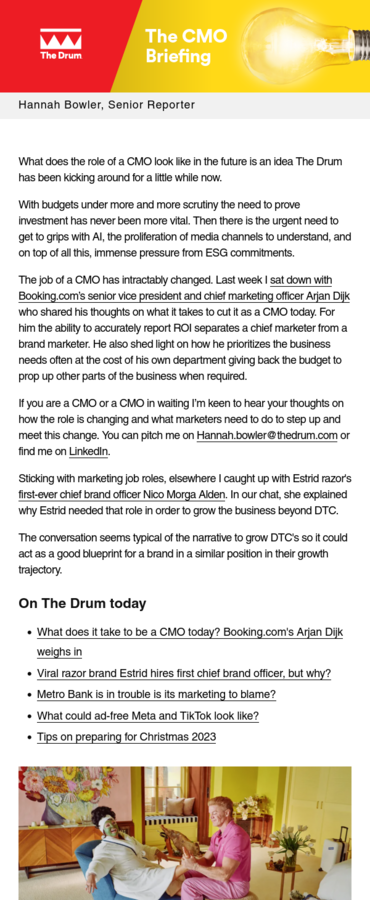Your top ten sonic branding questions answered
Sound is an important part of the human experience. It connects, binds, and enriches our relationships to not only people but also brands.

Your top ten sonic branding questions answered / Elice Moore/Unsplash
Our perception of sound and its meaning is even more relevant today since Covid has changed the way consumers interact with companies. Customers are wanting a low-touch, easier experience and with the dramatic rise in smart speakers taking up residence in homes and cars, audio brand recognition is crucial to the success of brand revenue and growth.
Despite all five of our senses competing for authority, hearing is our quickest sense. Our brains react to sound 10x faster than our visual capacity. In addition, our auditory subconscious processing is responsible for over 86% of our decision-making ability. This allows for an exclusive new level of connecting with customers wide open for the taking.
Surprisingly, the sensory branding of products is often limited to the visual. Sight over sound wins out the majority of the time. Yes, companies will often throw in a jingle or song, but this short-sightedness can cause them to cheat themselves out of a multitude of touch points to connect with their customers and vice versa.
This begs the question, why stick to one type of touch point when you have thousands at your disposal?
What is Sonic Branding?
Sonic branding (a.k.a. Audio Branding) is the strategic use of songs or sounds, representing a product or brand, that evoke a familiar association for consumers. In simpler terms, it is the unique sound or collection of sounds associated with a brand. In emotional terms, however, it is how you feel when you hear sounds associated with a brand. Comforted? Happy? Hungry? Excited? Thirsty? Motivated? A well thought out series of audio influences should elicit emotions and behaviors.
To further illustrate what sonic branding is about, consider the iconic sounds of Apple products, more notably, Apple itself. From the beginning, Apple solidified its presence in our ears with a series of iconic sounds representing every stage of product use. Soothing, memorable, and distinctive, Apple’s melodic chimes surpassed the buyer’s journey all the way to the user’s journey. Everything from Airdrop invite, message sent, empty trash, to the computer start up, encompasses their cohesive acoustic branding.
Their comprehensive auditory strategy also connects all Apple products, ranging from laptops and iPhones to Apple Pay. It is this unifying experience, and the familiarity of sounds, that has helped to create a diehard base of Apple fans. Like it or not, Apple set the bar extremely high for sonic branding.
What is the main purpose of sonic branding?
The ultimate goal in sonic branding is to connect with customers through audio mediums, which is now a large part of the customer experience. However, it actually goes much deeper than that. Sounds, especially music, surpass language, cultures, religion, personal beliefs, and politics to evoke a feeling that unites listeners in a shared experience. As companies expand, being able to communicate their brand identity to everyone is crucial for revenue progression.
What is the psychology of sonic branding?
Coffee is a universal addiction. The sound of brewed coffee steaming and gurgling is enough to get coffee lovers’ adrenalin pumping. Your mind immediately shifts to the delicious, dark liquid swirling in a cup eager to be swallowed. The sounds of coffee are so intoxicating that there is even an eight-hour YouTube video, with over 1.5 million views, that only has coffee shop sounds.
This explains why the psychology of sonic branding is so essential. Sounds evoke emotions as well as feelings of restorative nostalgia. They contribute to purchasing urges simply because as human beings, our brains associate sounds with our emotional senses. From a marketing standpoint, that is too powerful to ignore.
What is a sonic logo?
A sonic logo encapsulates your brand the same way as a visual logo - easy brand recognition but with auditory signals. With a sonic logo that same brand recognition and identity must be translated through sound.
Normally comprised of just a few seconds of musical notes or other repeatable sounds, a sonic logo has the enormous responsibility of carrying the entire meaning of a brand on its back. Whether millions of dollars are spent on its conception or just a couple of musicians with guitars in a garage, a sonic logo must hit the correct note for consumers.
Coco-Cola won the golden ticket with their sonic logo adaptation by translating their memorable red and white static logo into a thirst inducing audio logo. Coca-Cola’s signature ‘pop-fizz’ sonic logo begins simple enough, the sound of a coke bottle opening. It quickly follows with the clinking of ice cubes, a sloshy pour, carbonated fizz, and ends with a thirst-quenching ‘ahhh’. In just a few seconds Coca-Cola embodied everything their brand is about, satisfying your thirst with a delicious drink.
What is the difference between a jingle and sonic branding?
Sonic branding is geared toward the longevity of a brand ‘image’, a jingle however, is usually representing a specific marketing campaign or product. Jingles certainly have their place in branding and can be used for sonic branding if representing the entire brand.
Jingles are catchy ditties that tend to get stuck in our heads for days or even weeks. Written for that very reason, the melodic tunes remind us of certain brands whether we want to remember them or not.
Nationwide Insurance heads the top of several surveys with most respondents choosing the repetitive “Nationwide is on your side” jingle as the most widely recognized. Nationwide even extended their sonic branding to include various versions of their jingle with music stars Brad Paisley, Leslie Odom Jr., and H.E.R. each incorporating the repetitive tune into actual songs.
Advertisement
Why is sonic branding important?
The visual elements of branding have been present since the explosion of televisions in the 1950’s. Before TV, radio was the primary medium for advertising. Catchy jingles and songs captured the hearts of consumers everywhere with companies even sponsoring radio dramas and comedies.
When the usage of radio as a primary medium declined, auditory advertising took a back seat. Visual was the way to go. Magazines, television, and newspapers ruled the day. Today, however, acoustic technology is emerging at break-neck speed and brands are scrambling to keep up. Artificial intelligence, smart speakers, autonomous vehicles, and smart phones are working to become more intelligent than the average human.
Sonic branding is a company’s best bet to keep pace. Consider that as consumers, we are constantly surrounded by auditory opportunities: in our cars, retail stores, street corners, our homes, restaurants, buildings, theme parks, and so-on. The list is endless. Therefore, taking your branding to the next level with a strategy that incorporates sound is practically a no-brainer.
Is sonic or visual branding more effective?
Both our eyes and ears work together to amplify our interpretation of external stimuli. One increases the cognitive abilities of the other and vice versa. Despite this fact, a recent survey by PHMG suggests that in marketing, auditory sounds are more memorable for the consumer. Results showed:
60% of respondents stated that music was more memorable than visuals
47% said music helped them relate better with a brand
45% felt that music helped them understand a brand’s personality
While audio came out ahead, visual marketing components can still be imprinted with sound. Sonic branding serves to elevate visual components with an auditory connection that tends to focus more on eliciting emotion and aural memory. It is this emotional familiarity that can drive consumers’ behavior.
Advertisement
What are the benefits of sonic branding?
The benefits of sonic branding are just being fully explored, with new touch point channels emerging every day. A comprehensive study performed by Ipsos, revealed that audio assets are underutilized despite increasing brand recall by 8x, as compared to other brand assets such as logos and slogans.
With the number of touch points available to companies, it is surprising that more brands haven’t jumped on the sonic branding bandwagon. Audio touch points far outnumber visual ones, allowing brands to set up acoustic residence in the ears of consumers.
Ten of the most compelling benefits for sonic branding are:
- Brand awareness and perception
- Emotional connection
- Increased engagement
- Attention capture
- Elevated brand recall
- Sharing of values and brand purpose
- Increased loyalty
- Trust building
- Shared consumer experience
- Communication of brand personality
Considering these are ultimately revenue producing benefits, it makes sense to include them in your branding strategy.
Suggested newsletters for you
Is sonic branding right for your business?
Not every company has the big budget capabilities of McDonalds or Microsoft, however that shouldn’t be a deterrent for most brands. Budgets tend to grow as revenue grows, you have to start somewhere.
But is it right for your brand to begin with? Answer the following questions to determine if sonic branding is worth your while:
Do you currently use audio components in any of your marketing?
Is your audience already interacting with your brand acoustically?
Do any of your products have auditory identifiers?
Are there any visual factors of your marketing that can be elevated with audio?
Do you have a marketing strategy? Is it expanding?
Can sonic branding fit within your long-term marketing goals?
Deciding to invest in sonic branding should be a long-term commitment with a comprehensive marketing strategy situated firmly in place.
How do you create a sonic brand strategy?
Using music and sound to shape your brand involves a well-thought-out strategy that takes your entire company into consideration. Taking stock of your current audio approach is the best way to begin. Evaluate how your brand is currently communicating with customers and if you are missing any potential audio touch points.
Also, be clear about your company’s short-term and long-term goals. These should align with your marketing/branding timetable to ensure a smoother application of audio components. Other questions you will need to address are:
What identity as a brand do you want to impress upon consumers?
What components/channels will be receptive to the auditory process?
What is your long-term strategy for sonic branding?
How can you integrate audio into your marketing/branding plan?
How can you measure the success of your audio branding?
It’s important to remember that curating a solid brand identity takes time, resources, and a healthy budget. When you are adding a new factor such as sound branding, consistency, strategy, and longevity are the cornerstones for success.
Sonic branding has the unique ability to garner the attention of consumers, tug at their emotions, and tickle their brains with memorable earworms. It is the utilization of music, user experience sounds, and strategized communication points that are burning through the reticence of customers and driving loyal buying behaviors.
It is also a successfully subtle way for brands to reach a wider drove of people who might not be normal purchasing candidates. Considering the variety of available touch points, such as: product sounds, website interactions, playlists, streaming audio, and voice content just to name a few, customers have a treasure trove of available brand connections.
Becoming memorable as a brand can be a long road but adding sonic branding into your long-term strategy can be the pot of gold at the end of the rainbow.
For more in-depth marketing information, sign up for The Drum Plus.

